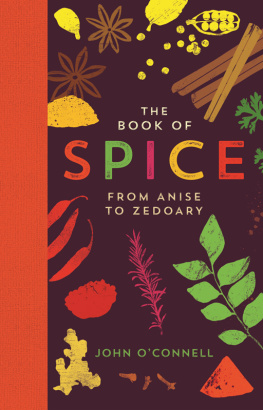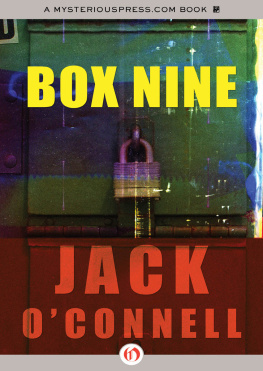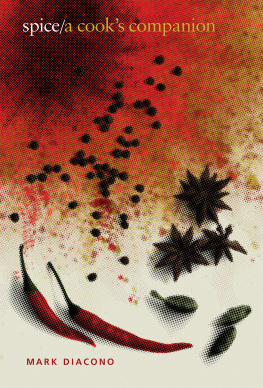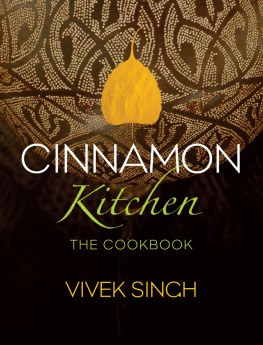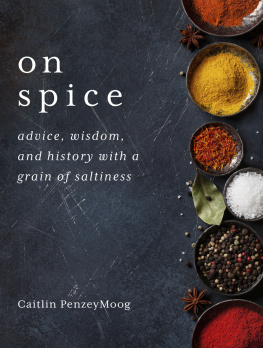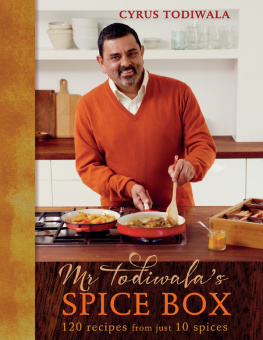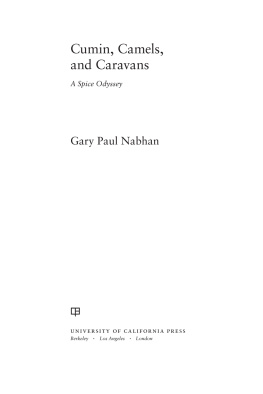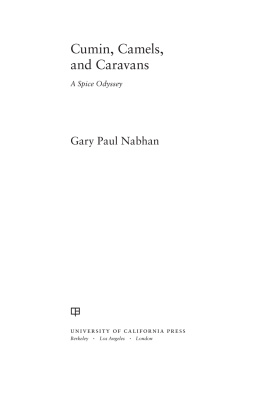THE BOOK OF
SPICE
JOHN OCONNELL lived on spaghetti bolognese and Birds Eye Steakhouse Grills until the mid 1990s, when he moved to London and discovered that, actually, there was a lot of other food out there and maybe it would be a good idea to try some of it? He worked for many years at the listings magazine Time Out, where somehow he persuaded the editor to buy a whole cow so that he could chronicle, in a weekly column, the experience of butchering and cooking it. He was made redundant shortly afterwards. He is the author of several books including I Told You I Was III: Adventures in Hypochondria and the novella The Baskerville Legacy. He writes regularly for The Times and Guardian and lives in south London. His favourite spice is cumin.
ALSO BY JOHN OCONNELL
I Told You I Was III: Adventures in Hypochondria
The Baskerville Legacy
For the Love of Letters
(with Jessica Cargill Thompson) The Midlife Manual
THE BOOK OF
SPICE
FROM ANISE TO ZEDOARY

JOHN OCONNELL

First published in Great Britain in 2015 by
PROFILE BOOKS LTD
3 Holford Yard
Bevin Way
London
WC1X 9HD
www.profilebooks.com
Copyright John OConnell, 2015
The moral right of the author has been asserted.
All rights reserved. Without limiting the rights under copyright reserved above, no part of this publication may be reproduced, stored or introduced into a retrieval system, or transmitted, in any form or by any means (electronic, mechanical, photocopying, recording or otherwise), without the prior written permission of both the copyright owner and the publisher of this book.
A CIP catalogue record for this book is available from the British Library.
eISBN 978 1 78283 088 7
A chilli, said Rebecca, gasping. Oh yes! She thought a chilli was something cool, as its name imported, and was served with some. How fresh and green they look, she said, and put one into her mouth. It was hotter than the curry; flesh and blood could bear it no longer. She laid down her fork. Water, for Heavens sake, water! she cried. Mr Sedley burst out laughing (he was a coarse man, from the Stock Exchange, where they love all sorts of practical jokes). They are real Indian, I assure you, said he. Sambo, give Miss Sharp some water.
William Makepeace Thackeray, Vanity Fair (1848)
INTRODUCTION
I remember vividly the first time I tasted spicy food. I was nine or ten, and we my mother, sister and I had come to London to visit Auntie Sheila, a deeply pious Irish Catholic woman who lived in a tiny flat in Marylebone that would now be worth about 16 billion. Auntie Sheila was not actually our aunt but one of our mothers oldest friends, and she fascinated us as children because she claimed an angel had once visited her in the night. (For the record, the angel had the most beautiful face you ever saw and a mass of golden ringlets. It smiled at her, as angels should.)
On this occasion we had a picnic in Hyde Park. Amid the deckchairs and joggers a blanket was spread out and green bags emblazoned with the legend St Michael emptied onto it. There were white fluffy rolls and crisps and bottles of lemonade, tubs of white goo with raw cabbage and tangerine floating in it, Caramel Delight Desserts liquefied crme caramel topped with star-bursts of cream and chicken legs coated in something bright red, sticky and oddly yoghurt-smelling.
Eurgh, I said, fishing one of these legs out of its plastic tray. What the hells this?
Its tandoori chicken, replied my mother. It comes all the way from Tandoor in India. She leaned forward and whispered sharply: Dont say What the hell in front of Auntie Sheila.
I bit into the chicken. It was delicious. One of the most delicious things Id ever eaten. How clever were the citizens of Tandoor, to have invented such a dish! That creamy sourness. That gentle, peppery heat with a hint of lemon and hang on, what were those other flavours, the ones overtaking on the inside lane as my saliva went to work?
There was only one word for them, a word I had never needed to use before: spicy.
This would have been 1981, possibly 1982 only a few years after a young woman in the product development department at Marks & Spencer called Cathy Chapman transformed food retail in Britain by introducing a range of high-quality chilled readymeals. The first of these was chicken kiev, a huge hit in 1979. A version of chicken tikka masala, the Nations Favourite Dish, followed soon afterwards. (Quite possibly, M&Ss St Michael-branded tandoori chicken legs were Chapmans idea too. I wouldnt be surprised.)
CTM, as chicken tikka masala is known in the trade, is supposed to be a British invention. The son of chef Ahmed Aslam Ali claims his father invented it in the early 1970s in his Shish Mahal restaurant in Glasgow after a customer complained that his tandoori chicken (and tandoori, as we all know now, refers to the clay oven in which the chicken is cooked, not a place) was a bit dry. Alis solution was to open a can of Campbells tomato soup, add some garam masala and a dash of cream and pour it over the chicken. Pukka, as someone once liked to say.
This is a wonderful story, so wonderful that in 2001 it formed the basis of a famous speech by the then foreign secretary, Robin Cook, to the Social Market Foundation singing the praises of multiculturalism. Cook described CTM as a perfect illustration of the way Britain absorbs and adapts external influences: Chicken tikka is an Indian dish, he declared. The masala sauce was added to satisfy the desire of British people to have their meat served in gravy.
Well, yes and no. The current thinking among Indian food historians is that, far from being inauthentic the meaningless criticism usually flung at CTM the dish is a bastardised version of murgh makhani, or butter chicken, invented (or at least popularised) by the New Delhi restaurant Moti Mahal shortly after partition in 1947. And if were going to talk about the appeal of meat in gravy, we can go back, back in time, to ancient Mesopotamia, the land between the Tigris and Euphrates rivers that is now part of Iraq, to prove its no mere British obsession.
When the French Assyriologist Jean Bottro deciphered three cracked clay tablets written in around 1700 BC in the Mesopotamian language of Akkadian, he realised not only that they contained the worlds oldest extant recipes, but also that these recipes were rich and sophisticated evidence of a scientifically based cuisine miles from the bland mush of pulses he and his colleagues had expected. Among the recipes curated and glossed by Bottro in his book The Oldest Cuisine in the World: Cooking in Mesopotamia (2004) are proto-curries in which meats such as lamb, goat, pigeon, stag and francolin (a species of wild fowl) are seared until charred before being immersed in a fatty, spiced broth to finish cooking. Using Bottro as a starting point, author and food blogger Laura Kelley, aka The Silk Road Gourmet, conducted research of her own and concluded that the Sumerians of southern Mesopotamia probably used a wide range of spices, including cinnamon, liquorice, carob, dill seed, juniper, sumac, cumin and asafoetida.
The point Im trying to make is straightforward, and its implications ripple out across this book: dietary habits change not in a formal, ordered fashion that it is possible or desirable to police, but by accident and, especially, assimilation. My childhood bite of tandoori chicken led me, over the course of the next thirty years, through a network of meandering taste pathways, influencing both the way I cook and the sort of food I want to eat. In short, it made me love spice.
Next page
